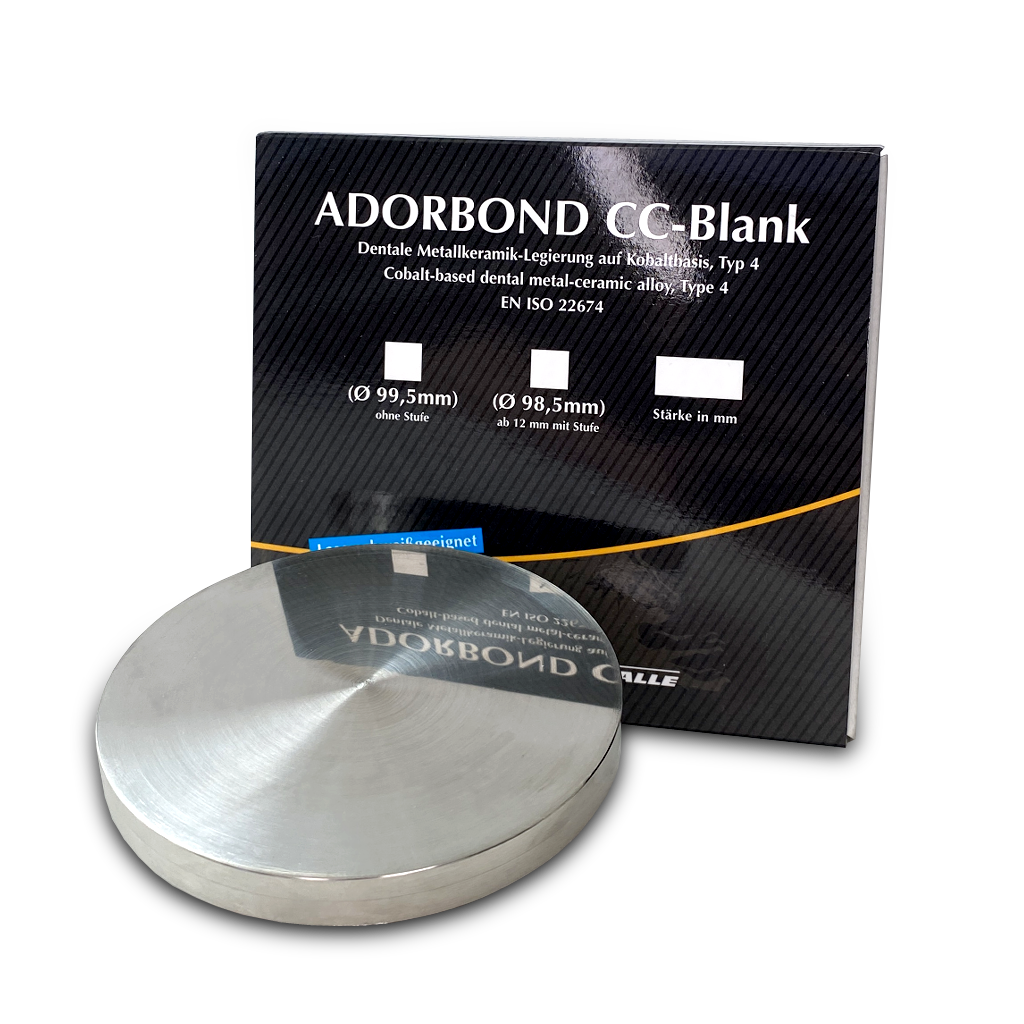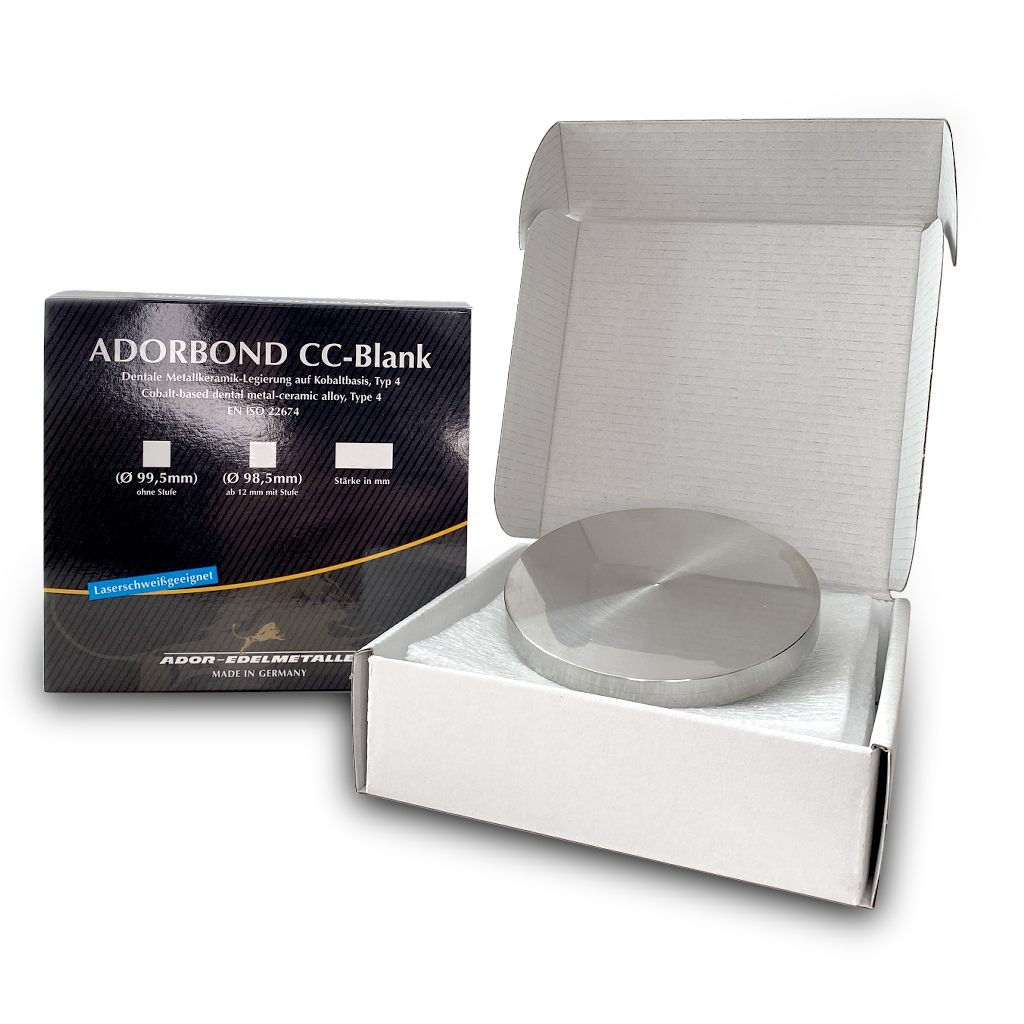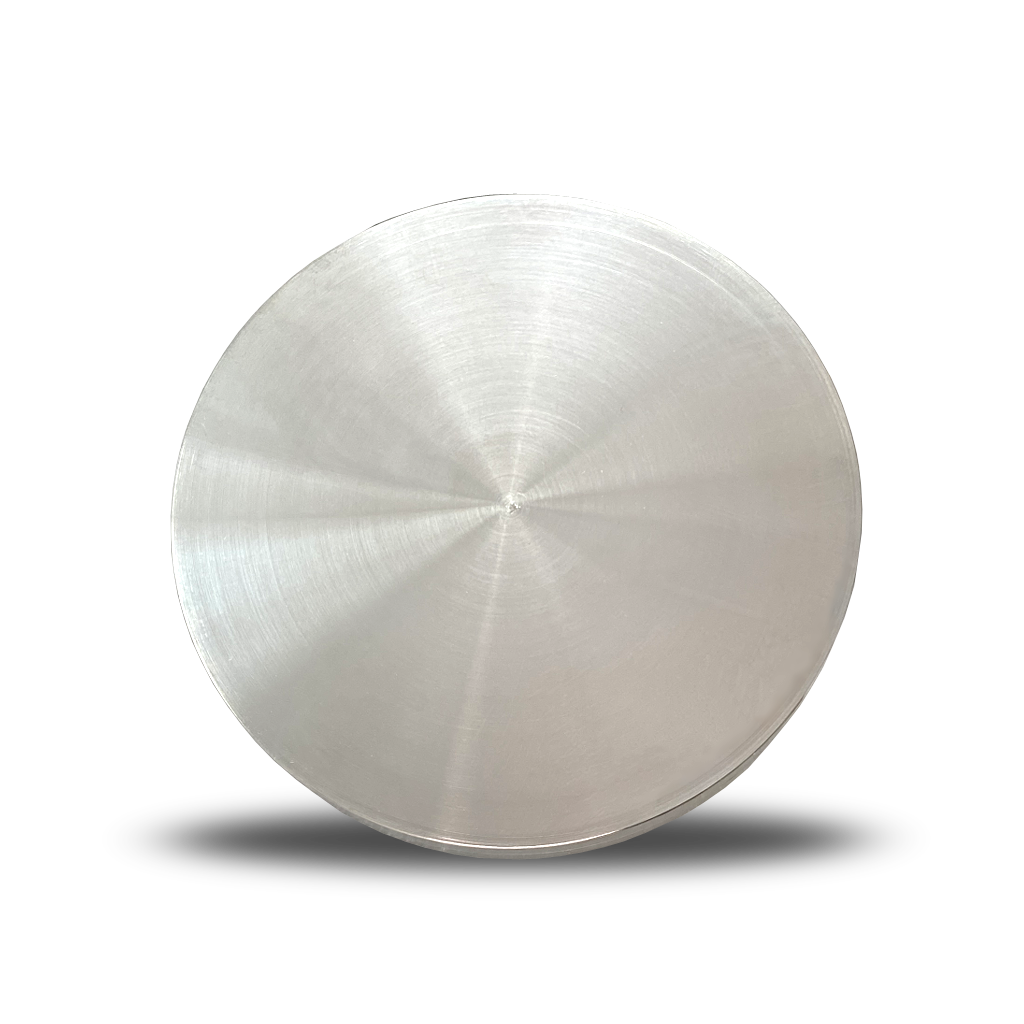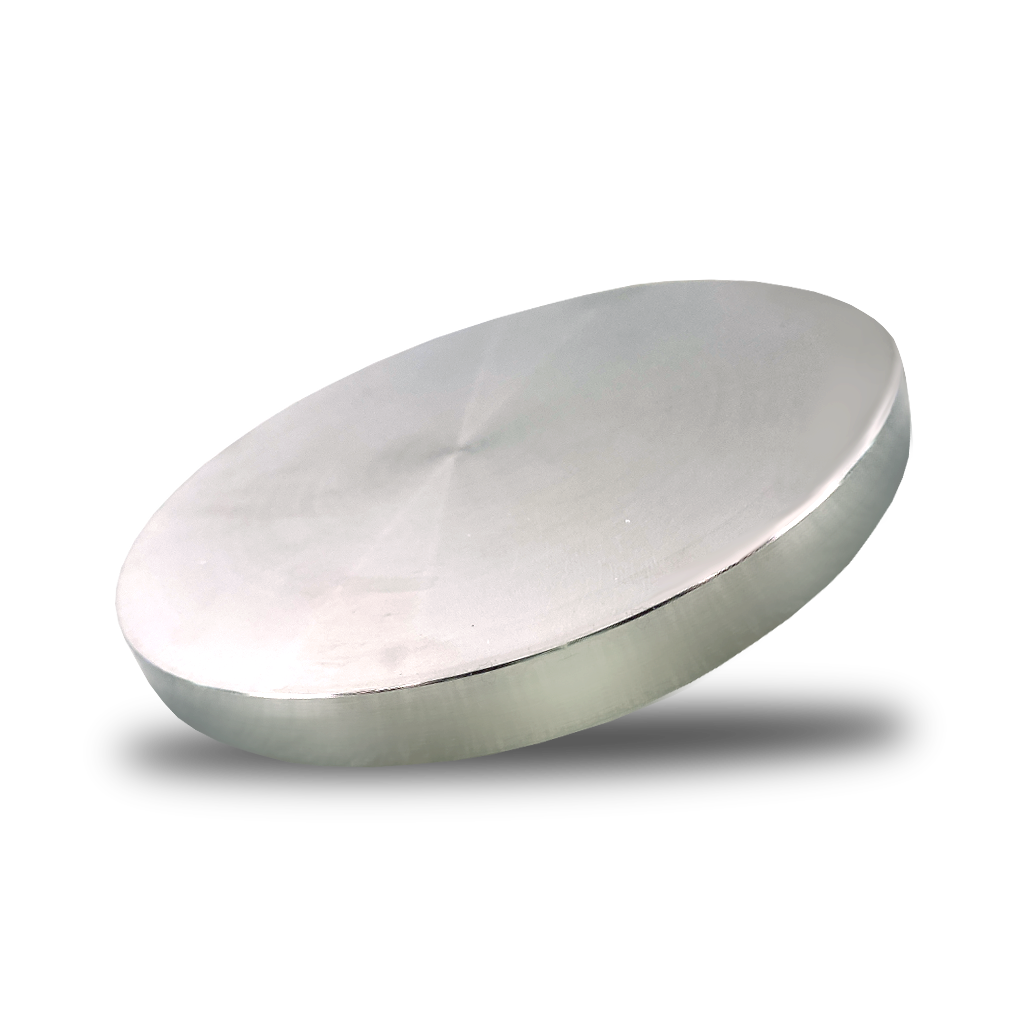ADORBOND CC Blank, diameter 98.5mm
1 unit
ADORBOND® CC Blank is a metal-ceramic alloy based on cobalt as a blank, diameter 98.5mm, from 12mm with step
171,90 € – 281,90 € excl. VAT
| Title | Menge | Preis/Stück |
|---|---|---|
| NEM Blanks | 5 - 9 | 5% 163,31 € |
| NEM Blanks | 10 - 24 | 10% 154,71 € |
| NEM Blanks | 25 - 49 | 15% 146,12 € |
| NEM Blanks | 50 - 99 | 20% 137,52 € |
Description
>> Adorbond CC Blank GBA Download DE/EN
ADORBOND® CC Blank Cobalt-based metal-ceramic alloy as blank, diameter 98.5mm, from 12mm with step
ADORBOND® CC Blank is a dental cobalt-based metal-ceramic alloy. ADORBOND® CC Blank is free from nickel,
cadmium, beryllium and lead and conforms to EN ISO 22674 type 4 for applications with thin cross sections that require very
are exposed to high forces, e.g. removable partial dentures, clasps, thin veneered single crowns, fixed dentures, etc.
Full arch prostheses or bridges with small cross-sections, bars, attachments and implant-supported superstructures
| Composition wi | Technical specifications (normative index, condition milled/bond) | |||||
| Co | % | 62,5 | Density ϱ | g - cm-3 | 8,3 | |
| Cr | % | 24,6 | Vickers hardness | HV 10 | 285 | |
| W | % | 8,5 | Linear coefficient of thermal expansion α 25 - 500 °C | 10-6-K-1 | 13,9 | |
| Mo | % | 2,9 | ||||
| Si | % | 1,3 | Linear coefficient of thermal expansion α 20 – 600 °C | 10-6-K-1 | 14,0 | |
| Nb, Mn, Fe, N | % | < 1 | ||||
| Melting interval TS - TL | °C | 1304-1369 | ||||
| Highest recommended bonding temperature TBr,max | °C | 980 | ||||
| 0,2-% Yield strength Rp 0,2 | MPa | 490 | ||||
| Elastic modulus E | GPa | 210 | ||||
| Elongation at break A5 | % | 10 | ||||
Processing recommendation
Design
The design is carried out with suitable CAD software, taking into account the standards of dental technology. Avoid wall thicknesses less than 0.35 mm for the CAD model. Increase the wall thickness at critical points. The connector is created as strong and high as possible (height: min. 3.5 mm, width: min. 2.5 mm).
Milling
Please use suitable tools and cutting data according to the manufacturer's instructions of the dental milling machine.
Firing the ceramic after framework production
The commercially available normal-fusing bonding ceramics for cobalt bonding alloys with a suitable coefficient of thermal expansion (CTE) can be used. Please observe the corresponding working instructions and the information provided by the ceramic manufacturer regarding the cooling rate after firing. After the framework is made:
1. Separate the connector and do the finishing work. Carbide cutters are recommended for this.
Blast the framework surface in the stylus blaster with aluminum oxide 100 µm or 250 µm.
3. Clean the framework either with distilled water in an ultrasonic cleaner or with degreasing agent ethyl acetate.
4. Oxide firing (optional for checking the surface) should be about 5 min at approx. 960 °C under vacuum. Always sandblast the oxide layer again after firing and degrease.
Note: cleanliness of the surface is the best protection against bubbles in the ceramic.
5. Apply a thin layer of Washbrand, fire only the second base coat for an even coverage.
Always let paste opaque dry for 5-10 minutes at 600°C before heating.
6. Ceramic firing and cooling according to the manufacturer’s instructions.
7. In case a long-term cooling is necessary, carry out a cooling phase to approx. 750 °C after each dentine, correction and glaze firing.
Finishing up
After firing the ceramic, rubberize unveneered framework parts and polish to a high gloss with a polishing paste for dental alloys or with rotating polishing tools.
Soldering and welding
Soldering before firing with the ADORBOND® CC Lot and high-temperature flux. The width of the solder gap should be 0.05-0.2 mm. Laser welding with the ADORBOND® CC laser wire.
Safety instructions
Metal dust is harmful to your health. Use suction when handling the powder, by finishing works and blasting. Hypersensitivity to the alloy components should be taken into account. In case of suspected intolerance with certain alloy components, the product should not be used.
Warranty
These technical application recommendations are based on our own tests and experience and can therefore only be regarded as guidelines. The dentist or dental assistent himself is responsible for the correct application of the product.
Additional information
| Weight | 532 g |
|---|---|
| Size | 98.5mm x 10mm, 98.5mm x 12mm, 98.5mm x 13.5mm, 98.5mm x 14mm, 98.5mm x 15mm, 98.5mm x 16mm, 98.5mm x 18mm, 98.5mm x 20mm, 98.5mm x 22mm, 98.5mm x 24mm, 98.5mm x 8mm |
Only logged in customers who have purchased this product may leave a review.




Reviews
There are no reviews yet.